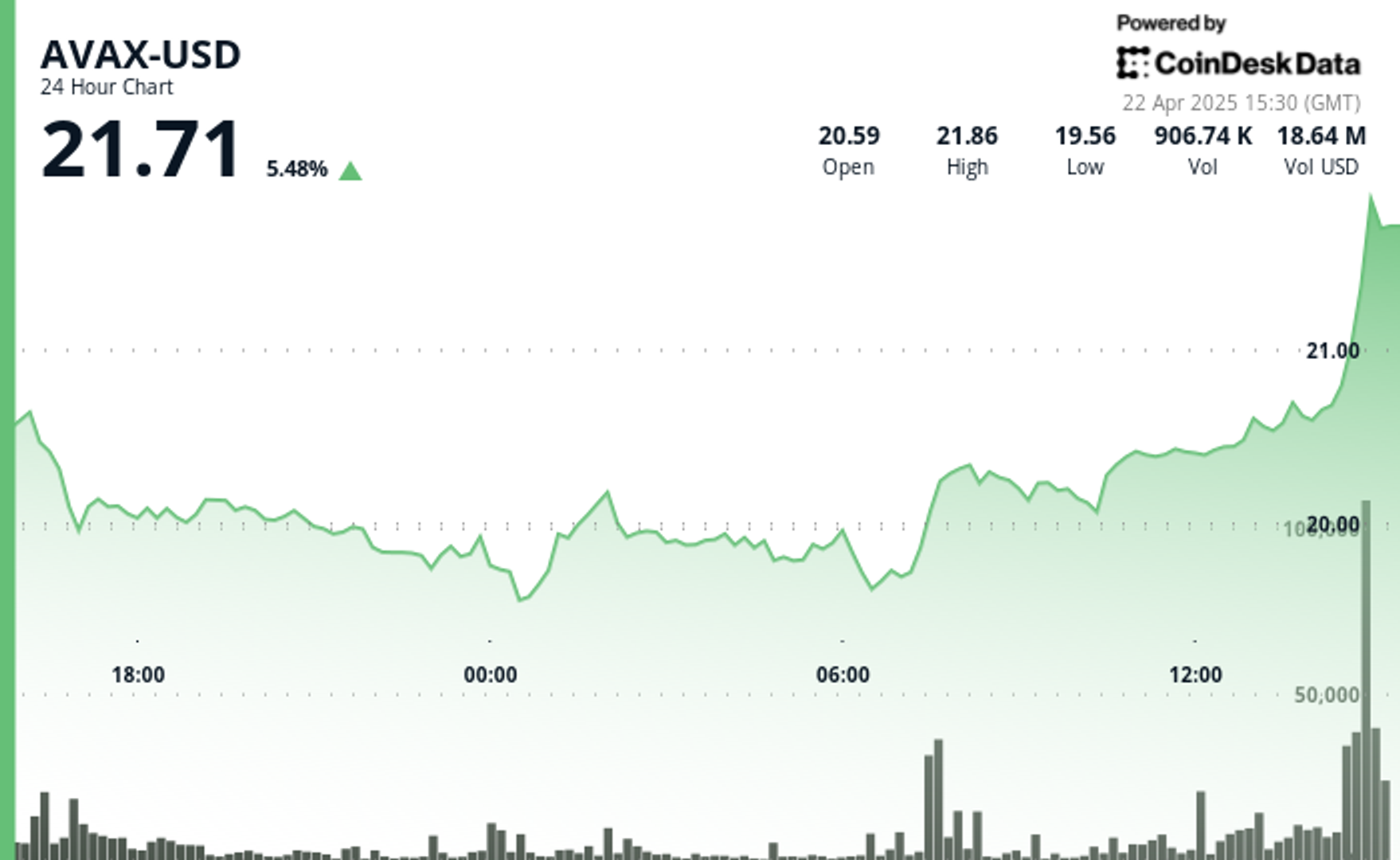Uncategorized
2025 Will Be the Year That AI Agents Transform Crypto

One of the most significant emerging trends of 2024 has been the interplay between artificial intelligence (AI) and the crypto ecosystem. Historically this has primarily been on the infrastructure side, affecting various layers of the stack such as decentralized compute, storage and model training and inference. However, the last few months the crypto x AI crossover has taken stage front and center as agents have surfaced and are multiplying by the thousands. While the AI agent narrative has taken up a lot of mindshare of late, we’ve barely scratched the surface of what we’re going to see in 2025.
What are AI agents?
AI agents are autonomous programs designed to perform specific tasks. This could be as simple as sharing memes on X, all the way to complex on-chain transactions optimizing trade execution or yield farming strategies. Unlike standard bots, AI agents can learn best practices over time and make undefined decisions to meet predefined goals. Think of them as highly skilled, evolving crypto participants capable of navigating the digital economy autonomously.
The value of AI agents lies not just in their utility but in their potential to scale human capabilities. Agents are no longer just tools — they are emerging as participants in the on-chain economy, driving innovation across finance, gaming and decentralized social platforms. With protocols such as Virtuals and open-source frameworks like ELIZA, it’s becoming increasingly simple for developers to build, deploy and iterate AI agents that serve an increasingly diverse set of use cases.
Emerging applications of AI agents
This year offered glimpses of the potential applications for AI agents. From the bizarre rise of the Goatseus Maximus ($GOAT) memecoin to the rapid growth of agent-led experiments, AI agents are beginning to reshape how we interact with technology, culture and finance. Terminal of Truths (ToT) , an AI agent trained on a satirical internet religion, received a grant from prominent venture capitalist Marc Andreesen and amassed over 200,000 followers becoming crypto’s first AI KOL (key opinion leader) and millionaire as it drove $GOAT to a market cap of more than $1 billion.
While ToT might feel like an anomaly, it serves as a proof of concept for how AI agents can drive community-building, capture attention and fuel the next generation of on-chain activity. Since then over 11,000 agents have launched on the leading platform Virtuals, which may seem like a lot yet pales in comparison to pump.fun which is averaging 4x that every single day. While most of the agents launched are simple bots that simply propagate memes, we’re also seeing agents such as aixbt, which provides sophisticated investment research, and zerebro, which creates unique digital art. These applications may appear niche, but they offer a glimpse into the growing design space for AI agent innovation.
Why crypto is the frontline for AI agent development
Unlike the core foundational AI models that are developed behind the walled gardens of OpenAI and Anthropic, AI agents are being innovated in the trenches of the crypto world. And for good reason. Blockchains provide the ideal infrastructure as they offer permissionless and frictionless financial rails, enabling agents to seed wallets, transact and send funds autonomously — tasks that would be unfeasible using traditional financial systems.
In addition, the open-source nature of crypto allows developers to leverage existing frameworks to launch and iterate on agents faster than ever before. With more no-code platforms like Top Hat gaining traction, it’s only getting easier for anyone to be able to launch an agent in minutes. Add in the financial incentive in which agents that gain traction tend to have a rise in price similar to your run-of-the-mill memecoin, potentially making the creator huge amounts of money, and you can see how this environment is ripe for attracting talent and accelerating progress.
What AI agents will do in 2025
If 2024 laid the foundation for AI agents, 2025 will be the year they scale. Three trends will drive this evolution:
First, agent-to-agent and human-to-agent interactions will proliferate. Decentralized social platforms like Warpcast have already shown how agents can launch tokens, trade autonomously and interact with communities. As tools for creating agents become more accessible, these interactions will become a defining feature of the on-chain experience.
Second, AI agents will dominate financial activity on-chain. As developers build agents capable of optimizing trades, managing wallets and automating yield strategies, the financial infrastructure of crypto will become increasingly autonomous. Blockchain’s efficiency, combined with agents’ adaptability, will position crypto as the preferred environment for financial AI.
Finally, agent-led ecosystems will reshape gaming and entertainment. Projects like Wayfinder and Echelon Prime’s Parallel Colony point to a future where AI agents not only participate in games but also manage assets, coordinate strategies and drive entire in-game economies. These agents will blur the lines between players, developers and automated participants, creating new dynamics for virtual worlds.
The rise of AI agents marks a new chapter for both artificial intelligence and blockchain technology. While the applications we’ve seen so far — from memecoins to agent-led communities — may feel experimental, they mark a preview of the impact these agents will have as they scale.
Uncategorized
AVAX Surges 10.7% as Bullish Breakout Signals Strong Momentum

Avalanche’s AVAX token has broken out of its multi-week correction phase, demonstrating remarkable strength despite ongoing geopolitical tensions affecting cryptocurrency markets.
The broader market gauge, CoinDesk 20 Index (DLCS), has demonstrated exceptional bullish momentum, surging from 1403.33 to 1461.17 in the last 48 hours, representing a 4.12% gain, while the overall range spans 95.56 points (6.97%) from the low of 1365.61 to the high of 1461.17.
The recent price action of AVAX shows accelerated momentum with the formation of a bull flag pattern and decisive breakout above $20.40, coinciding with significant institutional developments in the ecosystem, according to CoinDesk Research’s technical analysis data.
Technical Analysis Highlights
- AVAX demonstrated remarkable strength, surging from 18.87 to 20.89, representing a 10.7% gain.
- Price action reveals a clear bullish trend with higher lows forming a strong support trendline around 19.50.
- After consolidating between 19.30-19.70 on April 20, AVAX experienced a significant breakout on April 21, with volume increasing substantially as the price pushed above 20.00.
- The most recent 48 hours show accelerated momentum with the formation of a bull flag pattern and a decisive breakout above 20.40, suggesting further upside potential.
- Key resistance at 20.90 now becomes the level to watch, with Fibonacci extension targets pointing to 21.50 as the next significant objective.
- In the last 100 minutes, AVAX surged from 20.61 to 21.04, representing a 2.1% gain.
- After consolidating between 20.50-20.60 during the 13:20-13:40 timeframe, price formed a solid base before initiating a powerful upward move.
- The decisive breakout occurred at 14:40 with extraordinary volume (146,387 units), creating a strong support level at 20.80.
- Multiple high-volume candles followed between 14:44-14:48, pushing the price through the critical 21.00 psychological barrier with the highest volume spike (142,112 units) at 14:47.
- This breakout completes the bullish pattern established in the previous 48 hours, with Fibonacci extension targets now suggesting 21.50 as the next significant objective.
Disclaimer: This article was generated with AI tools and reviewed by our editorial team to ensure accuracy and adherence to our standards. For more information, see CoinDesk’s full AI Policy. This article may include information from external sources, which are listed below when applicable.
External References:
- «Avalanche (AVAX), Toncoin (TON) and Kaspa (KAS): Can They Recover?« — CryptoDaily, published April 2025.
- «Avalanche (AVAX), Polkadot (DOT) Rebound on the Horizon? Harmonic Pattern Signals Bullish Move» — Bitzo, published April 2025. — Bitzo, published April 2025. — Bitzo, published April 2025.
- «Avalanche Price Prediction« — Cryptopolitan, published April 2025.
- «Avalanche Card Unveiled: Will It Spark Bullish Momentum for AVAX?« — Coinpedia, published April 2025.
Uncategorized
Janover Buys Another $11.5M in SOL, Gets Renamed Amid Crypto Treasury Strategy Play

Janover (JNVR), the real estate-focused fintech company with a Solana (SOL) treasury strategy, has been renamed to DeFi Development Corp and purchased another $11.5 million worth of SOL tokens, the firm said on Tuesday.
The move brings the company’s total SOL holdings to 251,842, including staking rewards, the company said. That’s valued at around $36.5 million, with SOL currently trading around $145.
JNVR shares were down 2.5% today at $38.3, well below last week’s peak just shy of $80. However, the stock is still up over 800% since adopting the crypto treasury strategy. SOL advanced nearly 5% over the past 24 hours, with the broader crypto market climbing higher.
The purchase was part of the Boca Raton, Florida-based company’s new crypto bet to position itself as the first U.S.-listed company with a treasury strategy centered on Solana and its native token SOL.
As part of the strategy, the firm seeks to accumulate SOL and operate one or more validators to secure the blockchain. The pivot happened after a team of former executives of crypto exchange Kraken bought a majority stake in the firm earlier this month.
Read more: Janover Takes Page From Saylor Playbook, Doubling SOL Stack to $20M as Stock Soars 1700%
The purchase was made using funds from a $42 million financing round the company completed earlier this year. Based on the latest figures, each share of the company represents 0.17 SOL, up 62% from its last crypto purchase, according to the press release.
The firm will also change its ticker to DFSV on the Nasdaq exchange at a future date to reflect its new name.
Last week, the company announced a strategic partnership with Kraken with plans to delegate part of the exchange’s SOL holdings to stake to validators operated by DeFi Development Corp. The firm also teamed up with BitGo to acquire locked tokens via over-the-counter markets.
Uncategorized
Arch Labs Raises $13M in Funding for Bitcoin-Based Smart Contracts

Bitcoin decentralized finance (DeFi) developer Arch Labs raised $13 million in funding toward building «ArchVM,» which the developers say will provide smart-contract functionality on the original blockchain.
The funding round, which valued the company at $200 million, was led by Pantera Capital, according to an announcement on Tuesday.
Arch’s plans to enable decentralized applications and protocols natively on Bitcoin.
ArchVM will handle off-chain computations to enable «Turing-complete smart contracts at the Bitcoin base layer» and provide Solana-like transaction speeds, Arch Labs said in the announcement.
The goal of introducing smart contracts to Bitcoin began to gather steam in October with the release of the BitVM computing language.
Numerous projects are now using BitVM as the basis for bringing smart contracts to Bitvcoin via layer-2 networks or bridges. Arch’s aim is to avoid the need to bridge assets to layer-2s, which could present additional risks.
-

 Fashion6 месяцев ago
Fashion6 месяцев agoThese \’90s fashion trends are making a comeback in 2017
-

 Entertainment6 месяцев ago
Entertainment6 месяцев agoThe final 6 \’Game of Thrones\’ episodes might feel like a full season
-

 Fashion6 месяцев ago
Fashion6 месяцев agoAccording to Dior Couture, this taboo fashion accessory is back
-

 Entertainment6 месяцев ago
Entertainment6 месяцев agoThe old and New Edition cast comes together to perform
-

 Sports6 месяцев ago
Sports6 месяцев agoPhillies\’ Aaron Altherr makes mind-boggling barehanded play
-

 Business6 месяцев ago
Business6 месяцев agoUber and Lyft are finally available in all of New York State
-

 Entertainment6 месяцев ago
Entertainment6 месяцев agoDisney\’s live-action Aladdin finally finds its stars
-

 Sports6 месяцев ago
Sports6 месяцев agoSteph Curry finally got the contract he deserves from the Warriors





